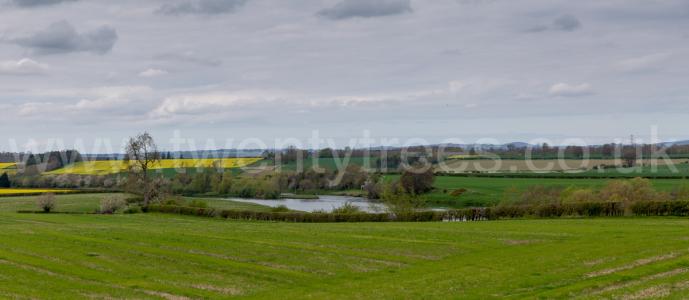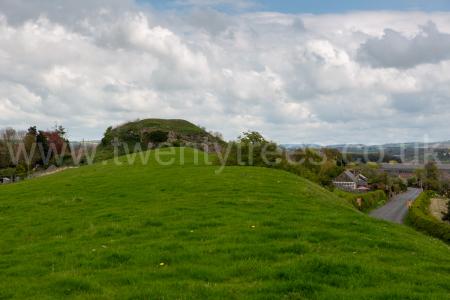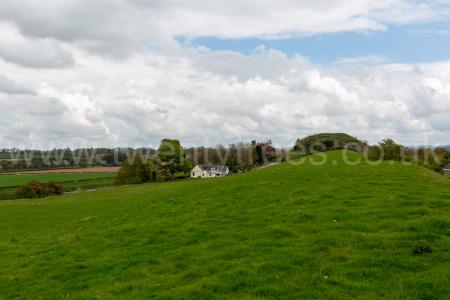1340-1349 Plague and Crecy
1340-1349 Plague and Crecy is in 14th Century Events.
Battle of Sluys
On 24 Jun 1340 King Edward III of England (age 27) attacked the French fleet at anchor during the Battle of Sluys capturing more than 200 ships, killing around 18000 French. The English force included John Beauchamp 1st Baron Beauchamp Warwick (age 24), William Bohun 1st Earl of Northampton (age 30), Henry Scrope 1st Baron Scrope Masham (age 27), William Latimer 4th Baron Latimer of Corby (age 10), John Lisle 2nd Baron Lisle (age 22), Ralph Stafford 1st Earl Stafford (age 38), Henry of Grosmont 1st Duke Lancaster (age 30), Walter Manny 1st Baron Manny (age 30), Hugh Despencer 1st Baron Despencer (age 32) and Richard Pembridge (age 20).







Thomas Monthermer 2nd Baron Monthermer (age 38) died from wounds. His daughter Margaret Monthermer Baroness Montagu 3rd Baroness Monthermer succeeded 3rd Baroness Monthermer.
Siege of Vannes
In 1342 Edward Despencer (age 32) was killed during the Siege of Vannes.
Battle of Morlaix
On 30 Sep 1342 the French army attacked the English besiegers of Morlaix forcing the English to retreat to the nearby woods. William Bohun 1st Earl of Northampton (age 32) commanded, John de Vere 7th Earl of Oxford (age 30) and Hugh Despencer 1st Baron Despencer (age 34) fought.


Creation of the Order of the Garter
On 23 Apr 1344. The date somewhat unclear; it may have been before. King Edward III of England (age 31) formed the Order of the Garter. The date is somewhat unclear. The first reliable record occurs in autumn of 1348 when the King's wardrobe account shows Garter habits being issued. The Order may have been formed before then with some traditions such as the mantle, and the garter and motto, possibly being introduced later. The Garter refers to an event at Wark Castle [Map] at which King Edward III of England (age 31) picked up the Countess of Salisbury's fallen garter and saying to the crowd "Honi soit qui mal y pense" ie Shame on him who thinks badly of it, or possibly, he brings shame on himself who thinks badly of it. The Countess of Salisbury could refer to his future daughter-in-law Joan "Fair Maid of Kent" Princess Wales (age 15) or her former mother-in-law Catherine Grandison Countess of Salisbury (age 40). The event has also been drescribed as taking place at @@Calias.Creation of the Order of the Garter
Catherine Grandison Countess of Salisbury: Around 1304 she was born to William Grandison 1st Baron Grandison and Sibylla Tregoz Baroness Grandison at Ashford, Herefordshire. Around 1320 William Montagu 1st Earl Salisbury and she were married. She by marriage Baroness Montagu. On 23 Nov 1349 Catherine Grandison Countess of Salisbury died at Bisham Abbey.



On 23 Apr 1344 King Edward III of England (age 31) created the Order of the Garter. The date nominal as there are different accounts; some sources say 1348.
2 Henry of Grosmont 1st Duke Lancaster.
3 Thomas Beauchamp 11th Earl Warwick.
4 Jean Grailly.
5 Ralph Stafford 1st Earl Stafford.
6 William Montagu 2nd Earl Salisbury.
7 Roger Mortimer 2nd Earl March.
9 Bartholomew "The Younger" Burghesh 2nd Baron Burghesh.
10 John Beauchamp 1st Baron Beauchamp Warwick.
11 John Mohun 2nd Baron Mohun of Dunster.
12 Hugh Courtenay.
13 Thomas Holland 1st Earl Kent.
15 Richard Fitzsimon.
16 Miles Stapleton.
17 Thomas Wale.
18 Hugh Wrottesley.
19 Neil Loring.
20 John Chandos.
21 James Audley.
22 Otho Holland.
23 Henry Eam.
24 Sanchet Abrichecourt.
Battle of Bergerac
Around 25 Aug 1345 Henry of Grosmont 1st Duke Lancaster (age 35) commanded the English forces at Bergerac, Dordogne during the Battle of Bergerac. The English army including Walter Manny 1st Baron Manny (age 35) won a decisive victory over the French with Henri Montigny captured.
Funeral Henry 3rd Earl Lancaster
After 22 Sep 1345 Henry Plantagenet 3rd Earl of Leicester 3rd Earl Lancaster (age 64) was buried at Church of the Annunciation of our Lady of the Newark [Map], or possibly the Hospital Chapel, at a ceremony attended by King Edward III of England (age 32) and his wife Philippa of Hainault Queen Consort England (age 31). His son Henry of Grosmont 1st Duke Lancaster (age 35) subsequently moved had his remains moved to St Mary de Castro Leicester, Leicestershire [Map].

Battle of Auberoche
On 21 Oct 1345 Henry of Grosmont 1st Duke Lancaster (age 35) commanded an English army including Walter Manny 1st Baron Manny (age 35) at Auberoche, Perigueux during the Battle of Auberoche. The battle was a significant victory for the English with the French forces being heavily defeated. The ransoms alone made a fortune for many of the soldiers in Derby's army, as well as Derby himself, who was said to have made at least £50,000 from the day's captives, and sealed his reputation as 'one of the best warriors in the world'.
Commencement of the Crécy Campaign
On 12 Jul 1346 King Edward III of England (age 33) landed at La Hogue [Map] with army of around 10,000 men including John Lisle 2nd Baron Lisle (age 28).

Battle of Caen
On 26 Jul 1346 the English army attacked and took Caen [Map] killing around 5000 French soldiers and militia. Otho Holland (age 30) fought.
Battle of Blanchetaque
On 24 Aug 1346 the Battle of Blanchetaque was fought between the English and French. The English had become trapped in an area denuded of supplies and needed to cross the River Somme to access food. The French army had destroyed all the bridges across the River Somme. At the 1800m wide ford at Blanchetaque, ten miles inland from the sea, Edward III's (age 33) army crossed the river despite resistance from the French. Hugh Despencer 1st Baron Despencer (age 38) led a force of English longbowmen across the ford to engage the French crossbowmen. Following the archery battle a force of English mounted men-at-arms, probably led by William Bohun 1st Earl of Northampton (age 36), engaged with the French. Following the battle the whole English army crossed the river then marched to Crécy to prepare for the next battle.


Battle of Crécy
On 26 Aug 1346 the army of King Edward III of England (age 33) defeated the French army at the Battle of Crécy. The English army was commanded by King Edward III of England (age 33), his son Edward "Black Prince" (age 16), Thomas Beauchamp 11th Earl Warwick (age 33), William Bohun 1st Earl of Northampton (age 36) and John Beauchamp 1st Baron Beauchamp Warwick (age 30).


The English army was included: Bishop Thomas of Hatfield (age 36), Hugh Despencer 1st Baron Despencer (age 38), Bernard Brocas (age 16), Thomas Felton (age 16), James Audley (age 28), Robert Bourchier 1st Baron Bourchier, Bartholomew "The Elder" Burghesh 1st Baron Burghesh (age 59), Bartholomew "The Younger" Burghesh 2nd Baron Burghesh (age 18), Reginald Cobham 1st Baron Cobham (age 51), John Darcy 1st Baron Darcy of Knayth (age 66), Robert Ferrers 3rd Baron Ferrers of Chartley (age 37), Richard Scrope 1st Baron Scrope of Bolton (age 19), William Scrope (age 21), Stephen Scrope (age 21), William Latimer 4th Baron Latimer of Corby (age 16), John Lisle 2nd Baron Lisle (age 28), Gerard Lisle 1st Baron Lisle (age 42), Nicholas Longford (age 61), Edward Montagu 1st Baron Montagu, Walter Paveley 4th Baron Burghesh (age 27), Michael Poynings 1st Baron Poynings (age 28), Robert Ufford 1st Earl Suffolk (age 48), John de Vere 7th Earl of Oxford (age 34), Thomas West (age 34), John Willoughby 2nd Baron Willoughby (age 43), John Wingfield (age 26), Henry Percy 11th and 3rd Baron Percy (age 25), Hugh Courtenay 10th Earl Devon (age 43) (possibly), Walter "Elder" Devereux (age 37), John Devereux (age 44), Enion Sais Brecon, John Chandos (age 26), Richard Pembridge (age 26) and John Sully (age 63).

















The French army suffered significant casualties. King Philip "Fortunate" VI of France (age 52) was wounded. William de Coucy (age 60) and his son Enguerrand 6th Lord de Coucy (age 33) and were killed.
Charles Valois Count Alençon (age 49) was killed. His son Charles Valois Archbishop of Lyons (age 9) succeeded Count Alençon.
Louis Chatillon II Count Blois I Count Chatillon was killed. His son Louis Chatillon III Count Blois Count Soissons succeeded III Count Blois.
Louis Dampierre II Count Nevers I Count Flanders (age 42) was killed. His son Louis Dampierre III Count Nevers II Count Flanders (age 15) succeeded III Count Nevers, II Count Flanders.
King John I of Bohemia (age 50) was killed. His son Charles IV King Bohemia Holy Roman Emperor Luxemburg (age 30) succeeded IV King Bohemia.
Rudolph "Valiant" Metz I Duke Lorraine (age 26) was killed. His son John Metz I Duke Lorraine succeeded I Duke Lorraine.
Jean IV de Harcourt (age 39) was killed.
Siege of Calais
On 03 Sep 1346 King Edward III of England (age 33) commenced the Siege of Calais. It lasted eleven months with Calais eventually surrendering on 03 Aug 1347.
In or after 03 Sep 1346 John Savile of Shelley and Golcar (age 21) took part in the Siege of Calais.
Battle of Neville's Cross
On 17 Oct 1346 at the Battle of Neville's Cross near Durham, County Durham [Map] the English inflicted a heavy defeat on the Scottish army that had invaded England in compliance with their treaty with the French for mutual support against England.
The English army included: William Deincourt 1st Baron Deincourt (age 45), Henry Scrope 1st Baron Scrope Masham (age 34), Ralph Hastings (age 55), Ralph Neville 2nd Baron Neville of Raby (age 55), Archbishop William Zouche, Henry Percy 10th and 2nd Baron Percy (age 45) and John Mowbray 3rd Baron Mowbray (age 35).




Of the Scottish army King David II of Scotland (age 22), John Graham Earl Menteith and William "Flower of Chivalry and Knight Liddesdale" Douglas 1st Earl Atholl (age 46) were captured and imprisoned in the Tower of London [Map].
Neil Bruce, John Randolph 3rd Earl of Moray (age 40), David Hay 6th Baron Erroll (age 28) and Edward Keith of Sinton (age 66) were killed.
Tournament at Lichfield
On 09 Apr 1347 Edward "Black Prince" (age 16) attended a Tournament at Lichfield. John Lisle 2nd Baron Lisle (age 28), Hugh Courtenay 10th Earl Devon (age 43) (or possibly his son also Hugh Courtenay (age 20) ) and Robert Ferrers 3rd Baron Ferrers of Chartley (age 38) took part in the Tournament. 



Battle of La Roche Derrien
On 20 Jun 1347 Charles "Saint" Chatillon Duke Brittany (age 28) was captured by Thomas Dagworth 1st Baron Dagworth (age 71) at La Roche Derrien during the Battle of La Roche Derrien.
Capture of Calais
On 03 Aug 1347 the English captured Calais [Map] providing England with a French port for the next two hundred years. Thomas Beauchamp 11th Earl Warwick (age 34) commanded, John Lisle 2nd Baron Lisle (age 29), Richard Vache and Henry of Grosmont 1st Duke Lancaster (age 37) fought during the year long siege.


1348 Black Death Plague Outbreak
In 1348 John Savoy (age 10) died of plague during the 1348 Black Death Plague Outbreak.
In 1348 John Barcelona (age 31) died of plague.
In Jun 1348 the 1348 Black Death Plague Outbreak arrived in England. The first of many occurrences. It is estimated to have killed between 25 to 60 percent of the population of around six million. The outbreak lasted through 1349 recurring in 1362, 1369 and regularly thereafter until its last significant outbreak in The Great Plague of 1666.
On 11 Sep 1349 Bonne Luxemburg Queen Consort France (age 34) died of plague in Maubisson, Pontoise. 
On 06 Jun 1349 William Harcourt (age 49) died of plague at Stanton Harcourt, Oxfordshire [Map].
On 20 Sep 1349 Archbishop Simon Islip was elected Archibishop Canterbury. His three predecessors having died in quick succession from the 1348 Black Death Plague Outbreak.
Before 21 Sep 1349 Hugh Fitzhugh Fitzhenry (age 15) died. Possibly by plague given the 1348 Black Death Plague Outbreak occurring at this time.
On 29 Sep 1349 Margaret Wake Countess Kent (age 52) died of plague. Her son John Plantagenet 3rd Earl Kent (age 19) succeeded 4th Baron Wake of Liddell and inherited her dower lands and the estates she had inherited from her brother Thomas Wake 2nd Baron Wake of Liddell.

On 26 Mar 1350 Alfonso "Avenger" XI King Castile (age 38) died of plague. His son Peter "Cruel" I King Castile (age 15) succeeded I King Castile.
Ordinance of Labourers
In 1349 Parlament enacted the Ordinance of Labourers in response to the shortage of labour caused by the 1348 Black Death Plague Outbreak. The Ordinance introduced
1349 Creation of Garter Knights
In 1349 King Edward III of England (age 36) created new Garter Knights:
26th William Fitzwarin (age 32). The date may be earlier.
27th. Robert Ufford (age 50).
28th William Bohun 1st Earl of Northampton (age 39).